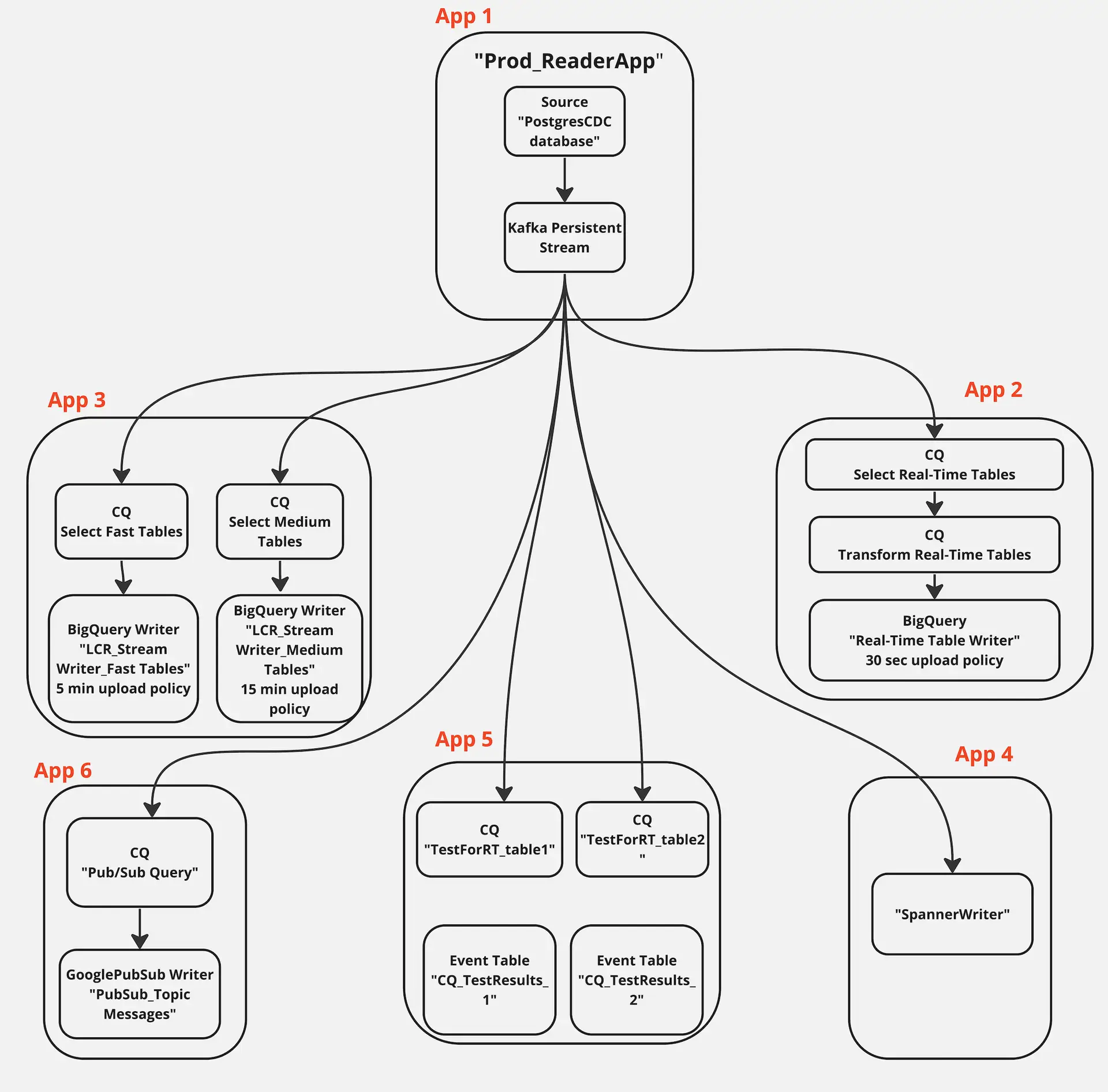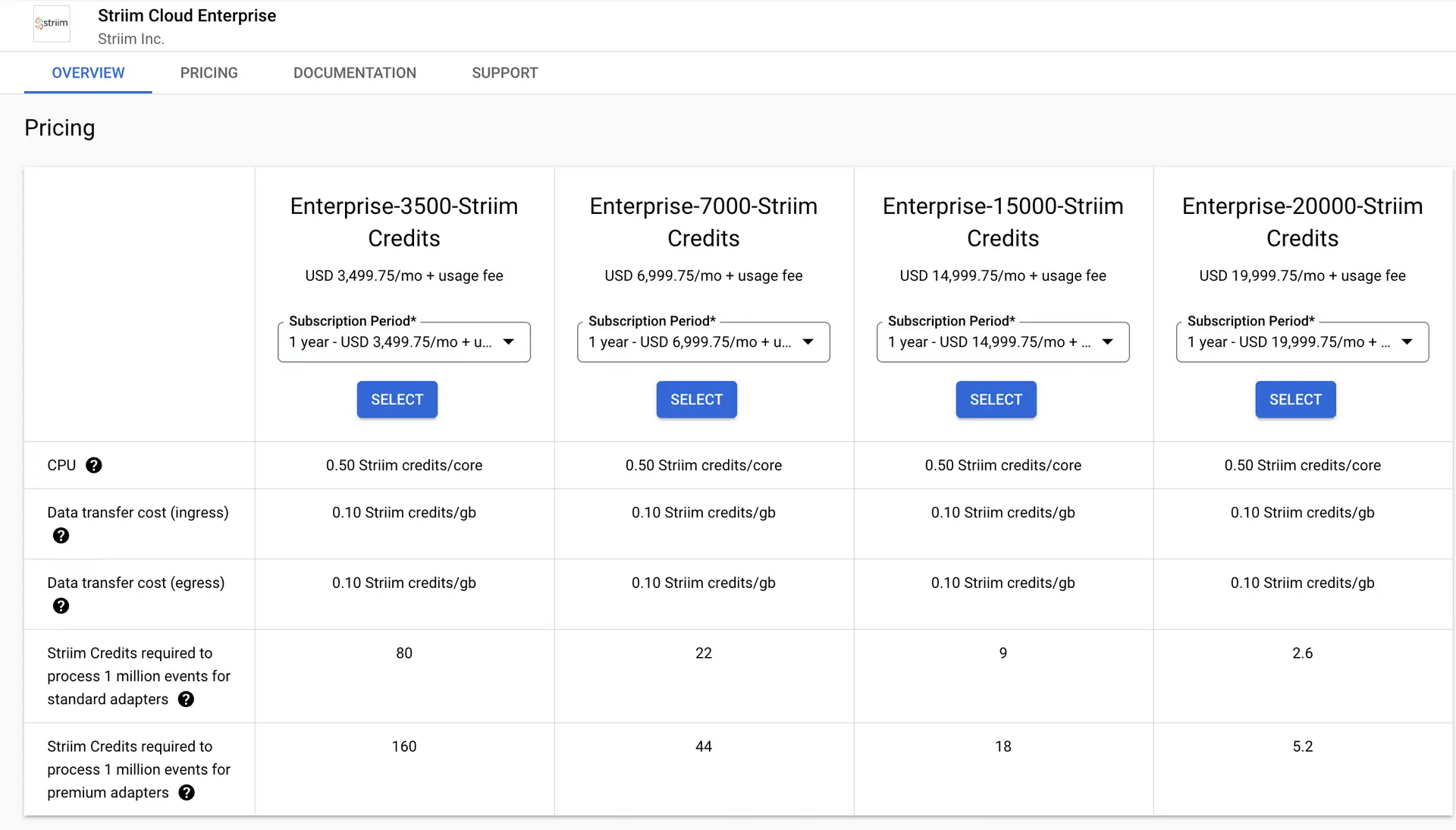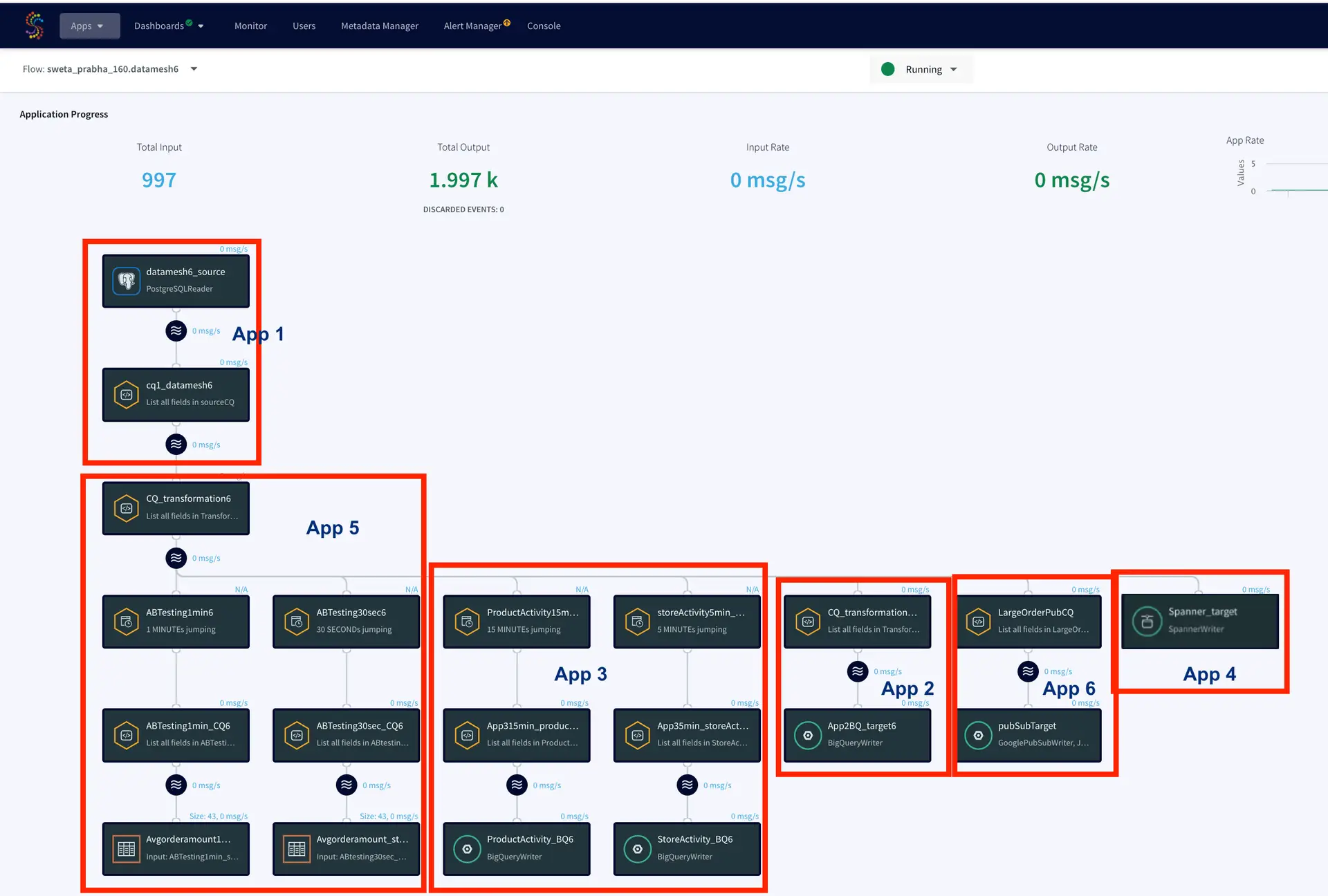Building Real-Time Data Products on Google Cloud with Striim
Leveraging Striim to create decoupled, decentralized real-time data products in Streaming SQL
Benefits
Domain Ownership
Transform raw change data capture logs to domain-specific business events in real-time
Decentralized Data
Use Striim to decentralize your data operations and provide self-service access to domain events
Data Contracts
Enforce contracts on schemas and data delivery SLAs across multiple business groups while minimizing load on the database
Overview
The Data Mesh – a concept coined by Zhamak Dehghani – is emerging as a popular set of principles and methods to manage enterprise data with product-thinking and domain ownership. Without diving into the details of Data Mesh, we want to highlight the importance of self-service data access, generalizing data for consumption, and sparing superfluous technical details of sourced data from analytical models.
While monolithic data operations accelerated adoption of analytics within organizations, centralized data pipelines quickly grew into bottlenecks due to lack of domain ownership and focus on results.
To address this problem an approach called Data Mesh and tangential Data Mesh data architectures are rising in popularity. A data mesh is an approach to designing modern distributed data architectures that embrace a decentralized data management approach.
In the following, we will dive into ‘Collaborating operational systems as data sources’ of a data product using Chapter 12 of Zhamak Dehghani’s Data Mesh book as a reference. To be clear: this recipe is NOT labeling itself as a way to ‘build a data mesh’, rather how teams can architect a source-aligned data product with operational databases as the source which supports a Data Mesh strategy. The other goal here is to create source aligned analytical data from an operational database rather than directly exposing change data capture logs to the analytical users.
“Common mechanisms for implementing the input port for consuming data from collaborating operational systems include asynchronous event-driven data sharing in case of modern systems, and change data capture.”. (Dehghani, 220)
In this data mesh use-case, we have shown how Striim aides decentralized architecture in the form of multiple decoupled Striim Applications with different data processing logic and delivery SLAs. We can leverage Striim for change data capture and persisted streams that can be consumed by separate targets to create data products.
The application created in this tutorial has five components serving five different teams. LCR data is read from a source database which is replicated and transformed in different streams. The data stream is persisted with a kafka message broker. The business architectural view of this application is shown below where Striim delivers real-time data to multiple consumers.
Data Contracts
- Capture raw changes from your database with low impact CDC
- Set parameters for Schema Evolution based on internal data contracts
- Propagate compliant schema changes to consumers on an independent, table specific basis
- Alert directly to Slack and other tools when schema contracts are broken
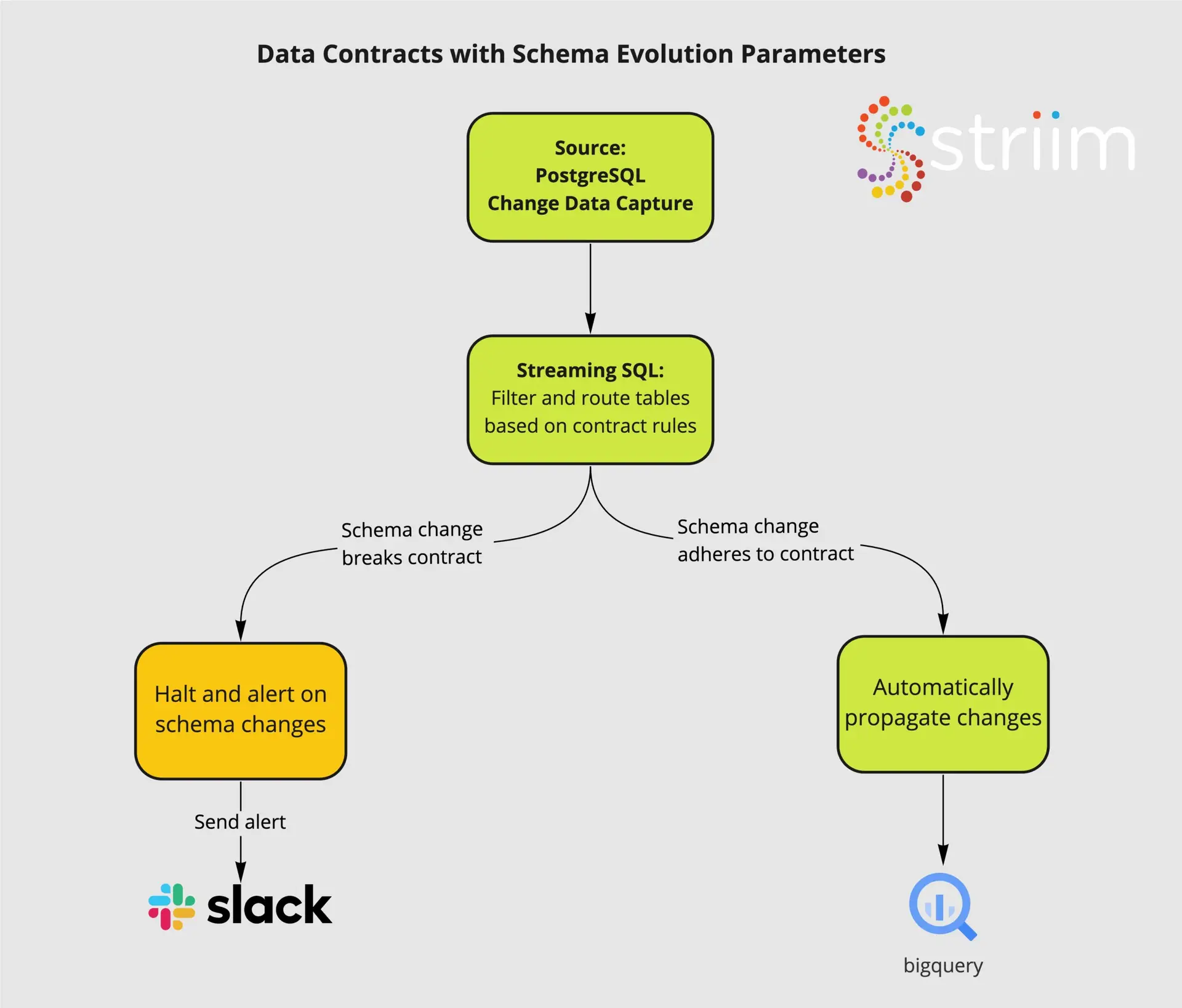
Schematic Architecture to support Data Mesh Pattern
The data mesh shown in the next sections has six apps that is fed data from the same source through kafka persisted stream
App1: Production Database Reader
This application reads LCR data from a Postgres database and streams into a kafka persisted stream
App2: Real-Time BigQuery Writer
This application transforms data in-flight and writes to a BigQuery data warehouse with 30 secs SLA. The team needs the real-time transformed data for inventory planning.
App3: Near Real-Time BigQuery Writer
This application reads fast table with 5 min SLA and medium/near real-time tables with 15 min SLA and write into BigQuery tables with the respective upload policy
App4: Cloud Database Replication
This application replicate the incoming LCR data into a Google Spanner Database in real time
App5: A/B Testing Query Logic
This application compares data from two different version of CQ to find the best data that can be ingested to a model that forecasts average order amount
App6: Pub/Sub
This application records all the order values larger than $500 and writes it to an existing topic in Google cloud Pub/Sub
Core Striim Components
PostgreSQL CDC: PostgreSQL Reader uses the wal2json plugin to read PostgreSQL change data. 1.x releases of wal2jon can not read transactions larger than 1 GB.
Stream: A stream passes one component’s output to one or more other components. For example, a simple flow that only writes to a file might have this sequence
Continuous Query : Striim Continuous queries are are continually running SQL queries that act on real-time data and may be used to filter, aggregate, join, enrich, and transform events.
Window: A window bounds real-time data by time, event count or both. A window is required for an application to aggregate or perform calculations on data, populate the dashboard, or send alerts when conditions deviate from normal parameters.
Event Table: An event table is similar to a cache, except it is populated by an input stream instead of by an external file or database. CQs can both INSERT INTO and SELECT FROM an event table.
BigQueryWriter: Striim’s BigQueryWriter writes the data from various supported sources into Google’s BigQuery data warehouse to support real time data warehousing and reporting.
Google Pub/Sub Writer: Google Pub/Sub Writer writes to an existing topic in Google Cloud Pub/Sub.
Spanner Writer: Spanner Writer writes to one or more tables in Google Cloud Spanner.
Launch Striim Cloud on Google Cloud
The first step is to launch Striim Cloud on Google Cloud. Striim Cloud is a fully managed service that runs on Google Cloud and can be procured through the Google Cloud Marketplace with tiered pricing. Follow this link to leverage Striim’s free trial for creating your own data-mesh. You can find the full TQL file (pipeline code) of this app in our github repo.
App 1: Production Database Reader
The first app reads the logical change streams from the production database into a ‘persistent stream’ that persists for 7 days. In this use case real-time Retail data is stored and is streamed from a Postgres database. The data consists real-time data of store id, skus and order details at different geographical locations.
Source Reader
Please follow this recipe to learn about how to set up a replication slot and user for a Postgres database that reads Change Data Capture in real-time.
Persistent Stream:
Striim natively integrates Apache Kafka, a high throughput, low-latency, massively scalable message broker. Using this feature developers can perform multiple experiments with historical data by writing new queries against a persisted stream. For a detailed description of this feature follow this link.
App 2: Real Time BigQuery Writer
In this application, the team needs inventory updates from each state in real time. The team takes care of the transportation of various different skus and does the inventory planning for each state to meet the forecasted demand. The application has a strict policy where real-time data must be available in BigQuery within 30 seconds. A Continuous Query transforms the data in-flight for analytics-ready operations rather than transforming in the warehouse.
The data is read from Kafka persisted stream, transformed in-flight and streamed to BigQuery target tables. To know more about how to set up a BigQuery target for Striim application, please follow this recipe.
App 3: Near Real-Time BigQuery Writer
In app 3 fast tables are selected from LCR (Logical Change Record) streams with 5 minute upload policy and medium/near-real time SLA tables are selected and written to BigQuery within 15 minutes upload policy. In this use case the Store activity data such as store id, order amount in each store and number of orders in each store are updated within 5 minutes whereas Product Activity such as number of orders for each sku are updated every 15 minutes on BigQuery table. This helps the relevant team analyze the store sales and product status that in turn is used for inventory and transportation planning.
App 4: Cloud Database Replication
For this app, the team needs real-time business data to be replicated to Spanner on GCP. The CDC data is read from Kafka persisted stream and replicated to Google Cloud Spanner.
App 5: A/B Testing CQ Logic
In this app, the team performs an experiment on stream with two different SLAs. The idea is to compare the average order amount of each state obtained from a 30 seconds window stream and 1 minute window stream for forecasting average order amount. The forecasting model is applied on each data stream to find out the best SLA for forecasting average order amount.The updated data is stored in an event table which can be read by the analytics team for A/B testing.
Continuous Query and Event Table
App 6: Google Pub/Sub Messaging App
In this app, the user wants to get a notification when a high value order is placed. The data is transformed in-flight using Continuous Query and all the orders greater than $500 are streamed into a google pub/sub topic which can be further subscribed by various teams.
Continuous Query and Pub/Sub Target Configuration
The topic is configured in Google Pub/Sub and the subscribers can pull the messages to see each new entry.
Running the Striim Pipelines
The following image shows the entire data mesh architecture designed using Striim as the streaming tool that replicated data to various targets with SLAs defined for each application.
Setting Up PostgreSQL to BigQuery Streaming Application
Step 1: Download the data and Sample TQL file from our github repo
You can download the TQL files for streaming app our github repository. Deploy the Striim app on your Striim server.
Step 2: Configure your Postgres CDC source
Set up your source and add the details in striim app
Step 3: Configure your BigQuery Targets
Add all the targets in this decentralized data-mesh application
Set up Google cloud Pub/Sub and add the details on Google Pub/Sub Writer component
Set up Google Spanner and configure Spanner Writer Component on Striim app
Step 6: Deploy and run your Striim Data Mesh app
Run your app for decentralized real-time data streaming
Wrapping Up: Start your Free Trial Today
The above tutorial describes each component of a decentralized application in detail. As demonstrated, Striim’s pipelines are portable between multiple clouds across hundreds of endpoint connectors.
As always, feel free to reach out to our integration experts to schedule a demo, or try Striim for free here.
Tools you need

Striim
Striim’s unified data integration and streaming platform connects clouds, data and applications.

PostgreSQL
PostgreSQL is an open-source relational database management system.
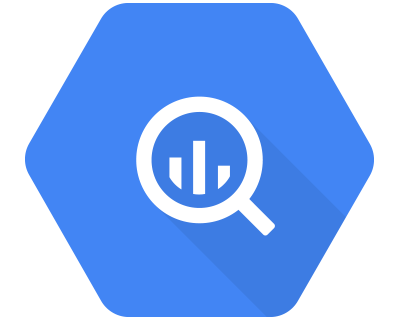
Google BigQuery
BigQuery is a serverless, highly scalable multicloud data warehouse.
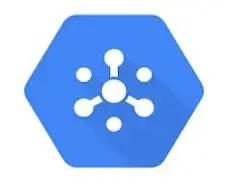
Google Cloud Pub/Sub
Google Cloud Pub/Sub is designed to provide reliable, many-to-many, asynchronous messaging between applications.
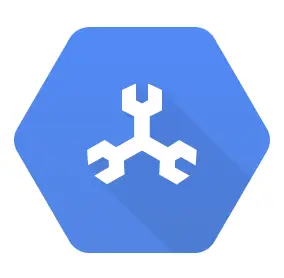
Google Cloud Spanner
Spanner is a distributed, globally scalable SQL database service


















